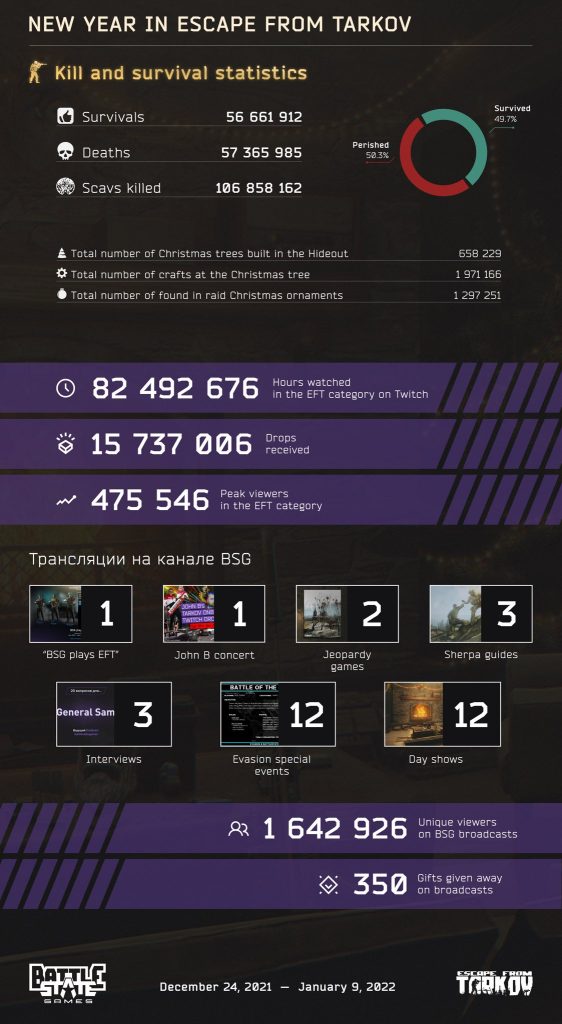Steam escape velocity (Gamingamics): the lowest commercial traction which a video game must have in order to reach the acceptance point players have for a particular PC game to be installed through a launcher that is not owned by Gabe Newell.
I remember when I was playing CS 1.6 on french GOA servers and Seattle’s big guy shoved down our throats the Steam installation on the 12th of September 2003.
What sort of heretic blasphemy was this software? How dare anyone force us to stop manually updating our folders each patch? As a 14 years old, I felt insulted, angry, and quickly went back on de_dust to vent my frustration with a few desert eagle headshots.
Fast toward to 2023, I’m not a raging virgin nerd anymore and Valve’s revenues and growth statistic through Steam became mind boggling :
- 46’000 games available, with 10’000 released in 2021 alone
- 13 Billion USD generated in 2022, 10 Billion USD from the Steam store alone
- Allegedly reached 1 Billion unique users in 2023.
- 75 million unique players, every, single, day.
And that kind of success, well, irritates a few people in the industry. As our booth at Gamescom 2023 was right next to Valve’s, I eavesdropped a few comments from a fellow game industry investor “30% and they do jack sh*t – look at that, their 10k$ a day booth is empty!”
Oh dear, yes, that looks quite empty I thought, shrugging at them as another one yelled “GIVE US HALF LIFE 3!” at the empty space.
I cringed a bit and went back to grab a panini before my 18th game pitch of the day.
Valve, a company without hierarchy, has notably developed a very cryptic reputation in a yearly 200 billion $ industry. They rarely speak in public, mostly adopt a “laissez-faire” attitude towards many topics. Hell even I tampered with the steam API with hundreds of bots back in my “disruptive” CSGO days. You could call their API an insane amount of times per minute, they never really cared. Trade hundred of thousands of dollars per account per day in items. Nope, still did not care.
But believing that Valve runs by itself and that employees are all chilling on Gabe’s 100M$ Rocinante yacht would be badly mistaken. The finely refined platform built over two decades offers the most formidable opportunity for developers to get discovered through an algorithm that many of us have taken years to study.
Valve has over time opened up to developers to educate them on how to boost their visibility.
They might have empty booths, they might be cryptic, however all they are obviously obsessed about is for the best games to be shown to the biggest amount of players. Valve’s dominance relies, amongst the plethora of Steam features firmly binding the PC community to them, on their algorithm. The way Steam offers visibility is based on a mimetic approach to how “embedded” your game is to a specific community. Remember that Valve built itself on the successes of HL1 and the subsequently acquired CS and TF mods. In that sense, the whole company culture built itself on the fact that you are only worth so much your community allows you to be. Steam is thus nothing more than a mirror of the communities that it binds itself to. Over the years, it has virtuously complemented itself with additions, each time increasing its added value, distancing competition and cementing itself to the PC tribe :
(^ single most useful video Valve has ever made about Steam, you should watch it)
So, Valve weights about 14 to 15% of global video game revenues. Epic, GOG, Ubisoft, EA, many “heavy weights” strived to remove Gaben’s crown with their own pretty crappy platforms.
Regardless of how advanced, balanced and “fair” Steam is in its discoverability proposal and community features, it seemingly feels that we are we doomed to pay 30% to big G and pay for Rocinante’s fuel.
Or is that so?
Battle State Games’ Escape from Tarkov has something to say about that: it is possible to get to Top 10 on Twitch, sell millions of copies and not be on Steam.
But how? What gave the popular extraction game this ability to dash through the seemingly infinite piles of content and become noticed so spectacularly?
Well, actually, as spectacular as EFT’s success is, it was not all sudden.
The title released on the ashes of its first iteration: Contract wars, released in 2010. The first game aimed at giving a realistic experience focusing on balistic precision and objective based tactical gameplay. With an incomplete game design and ultra high competitiveness on the segment, without a proper differentiating USP and too many similarities to established franchises, the game unfortunately did not manage to pierce through towards success. However, it gave a solid framework to BSG to capitalize on the valuable transposable experience to make a new iteration, entirely focused this time on bringing a strong USP to the shooting genre : MMO/RPG/FPS extraction masterpiece Escape from Tarkov was born.
Initially released on august 4th 2016, the game struggled to generate traction at the time compared to popular survival titles like DayZ, H1Z1 or Rust. As the megatrend moved into the Battle Royale craze with the release of PUBG 7 months later on 23rd of March 2017, things were seemingly looking bleak for Escape From Tarkov – and the game mostly remained unnoticed by the PC crowds fully busy either on PUBG or Fortnite.
A quick history check on the audience of the game will show you that it took almost 3 years 1/2 until october 2019 for Escape From Tarkov to finally gather the interest of more than 10k viewers on Twitch, with a rapid viral explosion by January 2020 with almost 100k viewers.

BattleState Games understood the power of twitch drops, linked to its ultra-replayable game design. A game as hardcore as EFT, where every single item counts, as PVP full loot is enabled, would make Twitch drops be extremely meaningful for players looking to progress in-game. In that sense Twitch Drops are not a marketing tool here, they are not a simple cosmetics bonanza but a direct contribution to a player’s progression. These drops really feel important to players and with a palpable impact on the content of their precious stash. It is highly likely that out of 100k CCU on twitch, atleast 25 to 30k left their computer on stream to make sure they would gather items.
Additionally to this key element, a specific amount of cleverly interwoven features can explain EFT’s success and allowed it survive throughout the Battle Royale phase to eventually explode:
- They offered a game design built on the “megatrend” of survival genres, with meaningful additions from each OIP that inspired them : STALKER/DayZ Mod/Rust/Ark Survival Evolved/PUBG/Fortnite
- Eureka moment for players: offering a ripe, refined & deep game design addition to a crowd “satiated” with Battle Royale & ready for something fresh.
- Production Quality: the true USP of EFT on top of its ultra-replayable game design is the production quality achieved over the years. The game feel of weapons, the associated sound design on top of customization possibilities which are almost limitless is really unprecedented (Do note EFT has no “fantasy” equipement, all weapons, gears, armors, accessories exist in real life, loyal to Nikita’s inception for the game: to become an encyclopaedia for weapons).
- No hand holding: unforgiving PvPvE meta, full loot & extremely steep progression curve.
- Brutal FTUE (it takes 100h ~ to be able to start properly understanding the game).
- Ultra-replayability: maps distribute bosses, POIs loot and as well as drop rates accordingly to a specific percentage RNG. In that sense, you can farm a specific boss or POI with a known loot table but you never know for sure what you will get.
Add to the elements here above a solid setting, a deep in-app c2c trade economy, asynchronous RPG progression of your “stash”, PVE quests to be managed within a PVP environement & the “fresh server” start every now and then through the wipe mechanic, you get a 300M$ gross title.
In that sense, Escape from Tarkov reached success without having to rely on Steam’s discoverability algorithm solely through the sheer quality of its game design.
It escaped Steam’s inevitable gravity through extremely meaningful additions to the megatrend, production quality & savvy decisions on player economy linked to Twitch drops, rendering the steam launcher & discoverability a simple “nice to have, but can do without and surely not at 30% fee”.
Sure on the technical end, all the weight has been on BSG’s shoulders to manage payments, launcher & player datas (Xsolla can help you just fine with that). But on a game able to sell 12M+ copies & stay in top 10 on twitch for years, perhaps it’s worth to save the revenues (2,5% is better than 30%).
Escape from Tarkov successfully took off from the Valve realm, and is quietly cruising in orbit on its own terms.
To put things in perspective, here are some stats from the game during a time frame of 16 days :

Well done, Nikita.
So, have studios started to notice Steam’s escape velocity? With the recent spectacular rise of Dark & Darker on Steam, with playtests ranging from 80k to 120k CCUs for a game in alpha and with viewership relatively stable now that the game is not on the platform anymore, one could argue that the phenomenon could grow.
Ultimately, it is mostly a question of whether or not a studio wishes to go “hardcore mode” by releasing outside of steam or if they want to ease some of the pain while accepting the fee strings attached over time.
Being successful on the extraction genre is far from easy as The Cycle: Frontier shows.
For the masterpiece Hunt: showdown , despite its rocky start and long history of patching over the years, Steam has been extremely instrumental for Crytek in retaining and growing the user base over the years.
The spectacular launch of Zero Sievert is another token that the genre can be extremely successful, even for small scale solo devs.
So given that some extraction games make it, some fail, from the perspective of a studio, going on steam or not is mostly a question of risk. EFT’s 300M$ gross is a moonshot and given the current rocky state of financing in the gaming industry I would definitely recommend to first use the formidable tool that Steam is for discoverability.
If you make it to Twitch’s top 10, offering a second version on a proprietary launcher all while favoring twitch drops to those using the new launcher might be a clever way to move your crowd from one platform to the other 🙂
Cheeki Breeki

